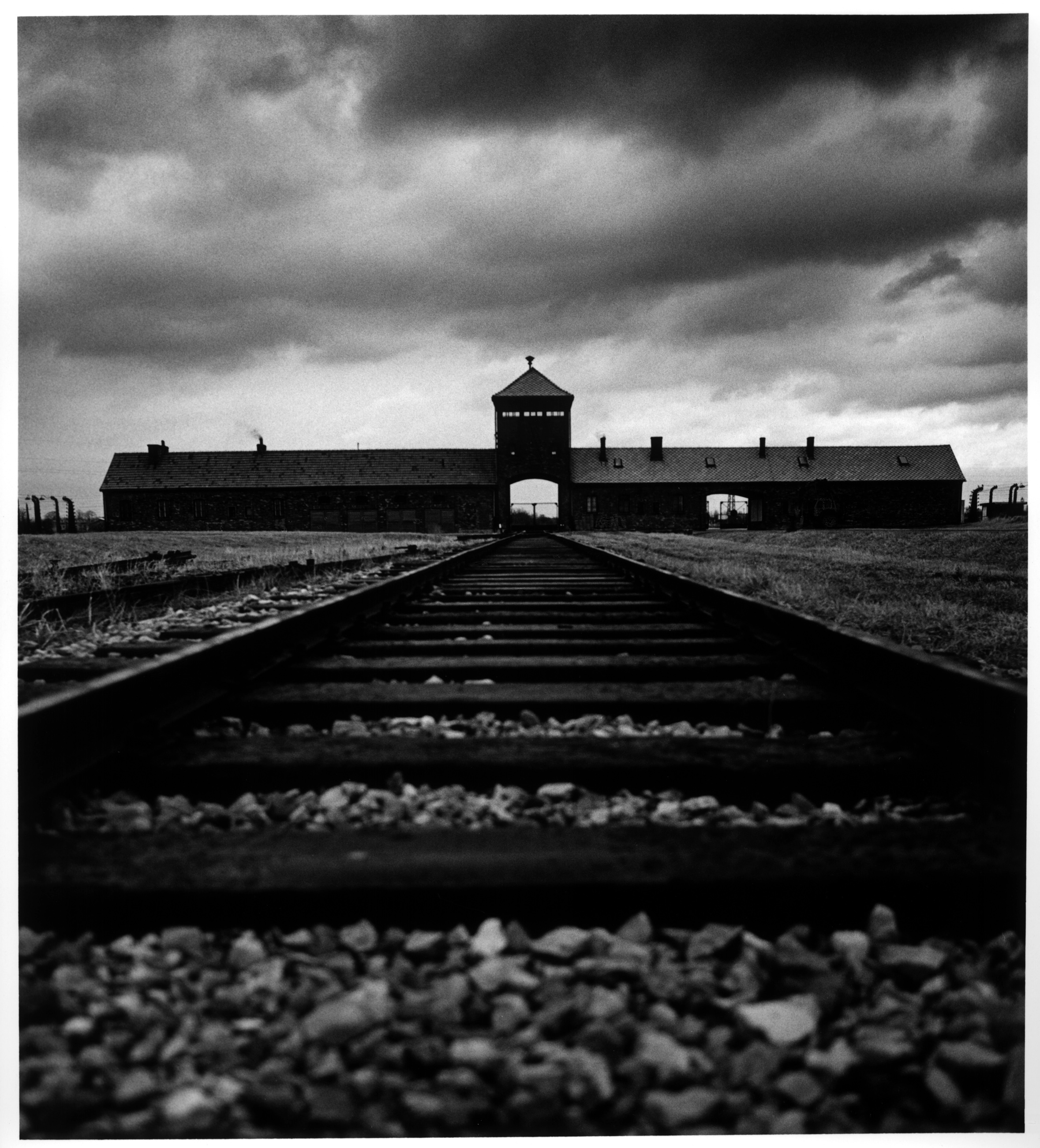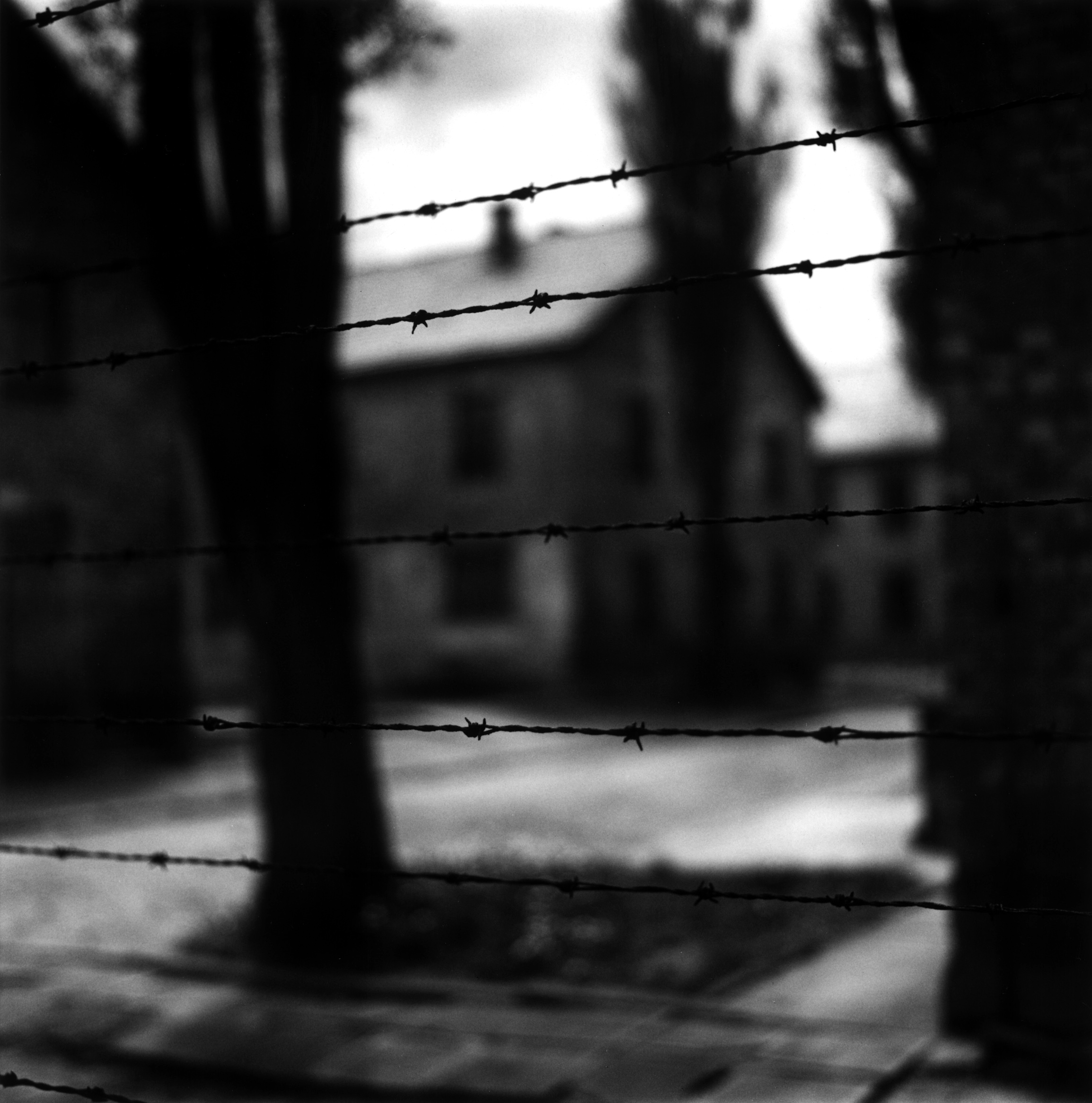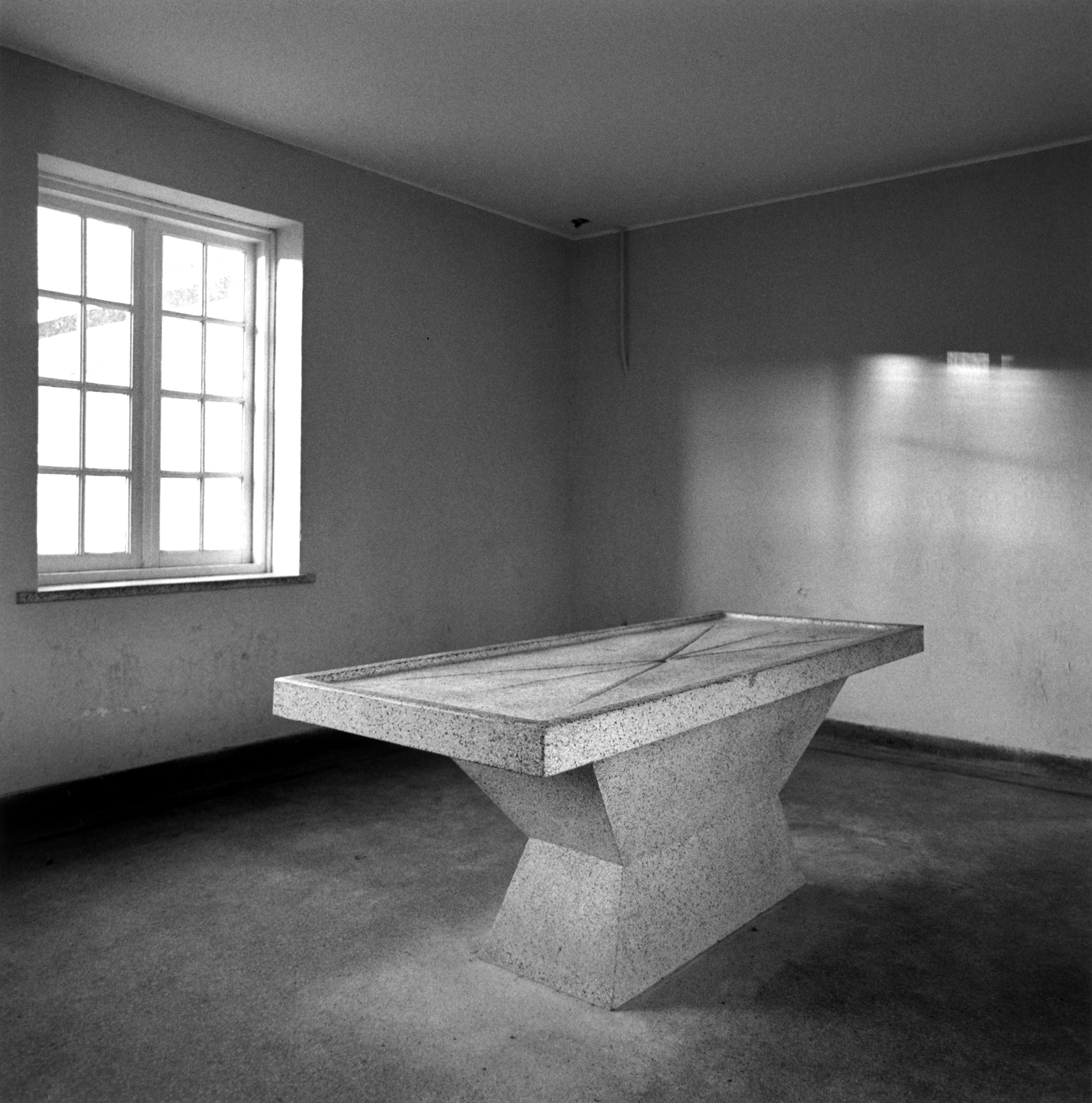
Tracks and Death Camp (c) Michael Kenna
| Home Writers Directory Gerald Greber May 9, 2007 |

Tracks and Death Camp
(c) Michael Kenna
A photo exhibit impossible to forget
CARLSBAD, Calif.—When you first enter the Cannon Art Gallery at the Carlsbad Library on Dove Street in Carlsbad you become aware of a series of black and white photos quietly hanging on the walls. However, a closer look guides you into becoming a witness to one of the most shocking times in the history of man—“The Holocaust”.
The photos were taken by Michael Kenna over a period of ten years in 24 concentration camps located in nine countries. The photos are simple and quiet. But they evoke a feeling of horror and remorse as one examines simple black and white photos of a pile of shoes, or a picture labeled “crematorium” where you know that millions of human beings were forever erased from the pages of mankind.
There are photos of the barbed wire perimeter fences and barracks which clearly tell the viewer of the filth and despair which was imposed upon prisoners whose greatest crime was being of a different religion, or mind set, or ethnic group—nothing more.
Although photographed within the last decade, one picture showed a rubbish heap that contained empty cans labeled “ZYKLON"— the gas that was used to end the lives of the innocent. There was one photo simply labeled “Dissection Table," which to me was a chilling reminder of Dr. Mengele who escaped justice by being protected by a South American government and then passing on before he could be apprehended.
There are two important areas tucked away that should not be overlooked. In a reading nook, there are photos of life in the various ghettos in Poland during the late 30’s and early 40’s. Here were the lives of Jewish people prior to being herded into the concentration camps. Some photos are of beautiful Jewish children of various ages during this same time period. One wonders grimly how many of them survived.
The second area houses a video collection including a variety of films of survivors talking about their experiences.
Several of the photographs show train tracks leading into the concentration camps. I found myself reflecting on a little known event that occurred here in the United States.
At the height of the Holocaust, during World War II, several Jewish leaders, rabbis and others, put forth a suggestion to both President Franklin D. Roosevelt and Air Force General Hap Arnold. They urged that on one of the bombing raids that were being conducted in the various areas of Europe, that the railroad tracks leading to the concentration camps could be targeted and destroyed. This would stop the transportation of innocent individuals to their final demise. The suggestion was rejected by General Arnold because “It is a non-military target”.
Later in the hostilities a railroad station in Austria was bombed as a military target. Coincidently, on the tracks there was a trainload of refugees waiting to be shipped to Auschwitz. The terminal was so badly damaged that the train never left the station. The people on board never left Austria and they survived the war to tell their story.
Only 80 of Kenna’s 10,000 photos are on display. How can such a relatively small number of photos tell such a long and dramatic tale of humiliation and abuse? However, the photos quietly succeed. And this is important.
With the passage of time survivors of the Holocaust are less and less able to give witness to the atrocities perpetrated on humanity. In addition there is a growing movement to deny that it ever occurred. It therefore becomes even of greater importance to educate future generations of the inhumanity committed upon humanity. This fact has been stressed by many of the remarks noted in the “Comments” book by visitors.
Such was the objective, espoused by Karen McGuire, curator of expositions, at the Cannon Art Gallery of the Carlsbad Public Library. After 9/11 McGuire felt that the need was immediate. When she learned of this touingexhibition, organized by Patrimoine Photographique, Paris, she arranged to bring it to Carlsbad.
Photographer Michael Kenna will be the guest speaker in the library's Schulman Auditorium at 6pm Saturday evening, June 2, the evening before the exhibition closes. Seating is limited.

Gate of the Lie: "Work Makes You Free" (c) Michael Kenna

Barbed
Wire (c) Michael Kenna

Shoes (c) Michael Kenna

Oven (c) Michael Kenna

Dissection table (c) Michael Kenna